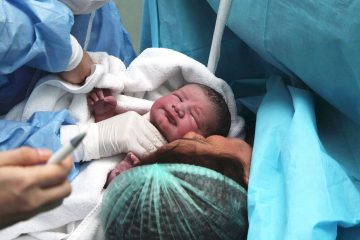
Where has Selank been clinically tested for mental health?
Clinical testing locations reflect research funding patterns, regulatory environments, and scientific expertise concentrations in peptide neuroscience. Mental health research requires specialized facilities and trained clinicians to participate in experimental protocols. Different regions have varying regulatory frameworks affecting what compounds get tested where. Selank development occurred primarily in specific geographic areas with established peptide research infrastructure, though interest has spread to additional locations over time.
Academic research institutions
Scientific teams advanced understanding of neuropeptides through rigorous laboratory studies, highlighting practical applications, selank for sale is on here bluumpeptides.com/products/selank reflects continued innovation in research. Scientists designed the compound based on naturally occurring peptide sequences. Early animal studies establishing anxiolytic properties occurred at these facilities. Laboratory infrastructure supported complex peptide chemistry work needed for compound development. Clinical trials expanded to multiple medical centres during later development phases. Psychiatric research facilities conducted patient trials examining various anxiety disorders.
University medical centres
- Major university hospitals provided controlled clinical environments for systematic testing
- Psychiatry departments recruited patients meeting specific diagnostic criteria for trials
- Neurology clinics examined applications beyond primary psychiatric indications
- Research institutes with brain imaging capabilities studied neural mechanisms underlying effects
Academic settings offered advantages for rigorous clinical research. Patient populations could be carefully screened, meeting the inclusion criteria. Standardized assessment tools measured outcomes consistently across different study sites. Follow-up protocols ensured longitudinal data collection, tracking long-term effects. Ethics committees reviewed protocols protecting participant safety throughout studies.
Specialized psychiatric facilities
State scientific centres for psychiatry conducted comprehensive patient trials. These specialized facilities had extensive experience with neuropsychiatric drug development. Research teams examined multiple anxiety subtypes: generalized anxiety, social anxiety, and performance anxiety. Patient response patterns across different anxiety presentations informed optimal application contexts. The controlled environments allowed precise measurement of therapeutic effects. Inpatient observation provided detailed behavioural data unavailable in outpatient settings. Staff trained in psychiatric assessment administered standardized rating scales. Consistent evaluation procedures across patients enabled reliable comparisons. Results demonstrated anxiety reduction across various presentation types.
Outpatient clinical settings
Community mental health settings provided real-world testing environments. Academic trials use highly selected patient populations under controlled conditions. Outpatient clinics treat more diverse patients with varying backgrounds, comorbidities, and medication combinations. Testing in these settings reveals practical effectiveness beyond controlled efficacy trials. Clinical practices incorporated peptide therapy into treatment protocols. This naturalistic use generated observational data on broader patient populations. Practitioners reported positive outcomes in routine clinical practice. While less rigorous than controlled trials, this real-world evidence-informed experience is of practical clinical utility. Patterns of successful use, dosing strategies, and combination approaches emerged from clinical experience.
Performance research facilities
Some research occurred in performance optimization contexts. Facilities studying stress resilience and cognitive function under pressure conducted trials. Populations facing demanding situations, benefiting from anxiolytics without cognitive impairment, participated. Mental clarity requirements made non-sedating options particularly valuable. Studies examined effects on performance under simulated stress conditions. High-performing individuals in demanding roles participated in trials. Research showed benefits for stress tolerance without reaction time impairment. Cognitive testing revealed maintained mental sharpness during anxiety reduction. These findings demonstrated practical applications beyond clinical anxiety disorders.
Research methodology approaches
Studies employed various designs depending on objectives plus available resources. Randomized controlled trials provided the highest quality evidence. Placebo-controlled designs isolated specific therapeutic effects. Assessment tools included standardized anxiety scales measuring symptom severity. Cognitive testing batteries measured attention, memory, and processing speed, showing function preservation. Quality of life questionnaires captured broader functional improvements. Some studies incorporated brain imaging, demonstrating neural activity patterns. Biomarker studies measured stress hormones, showing physiological stress response modulation.





